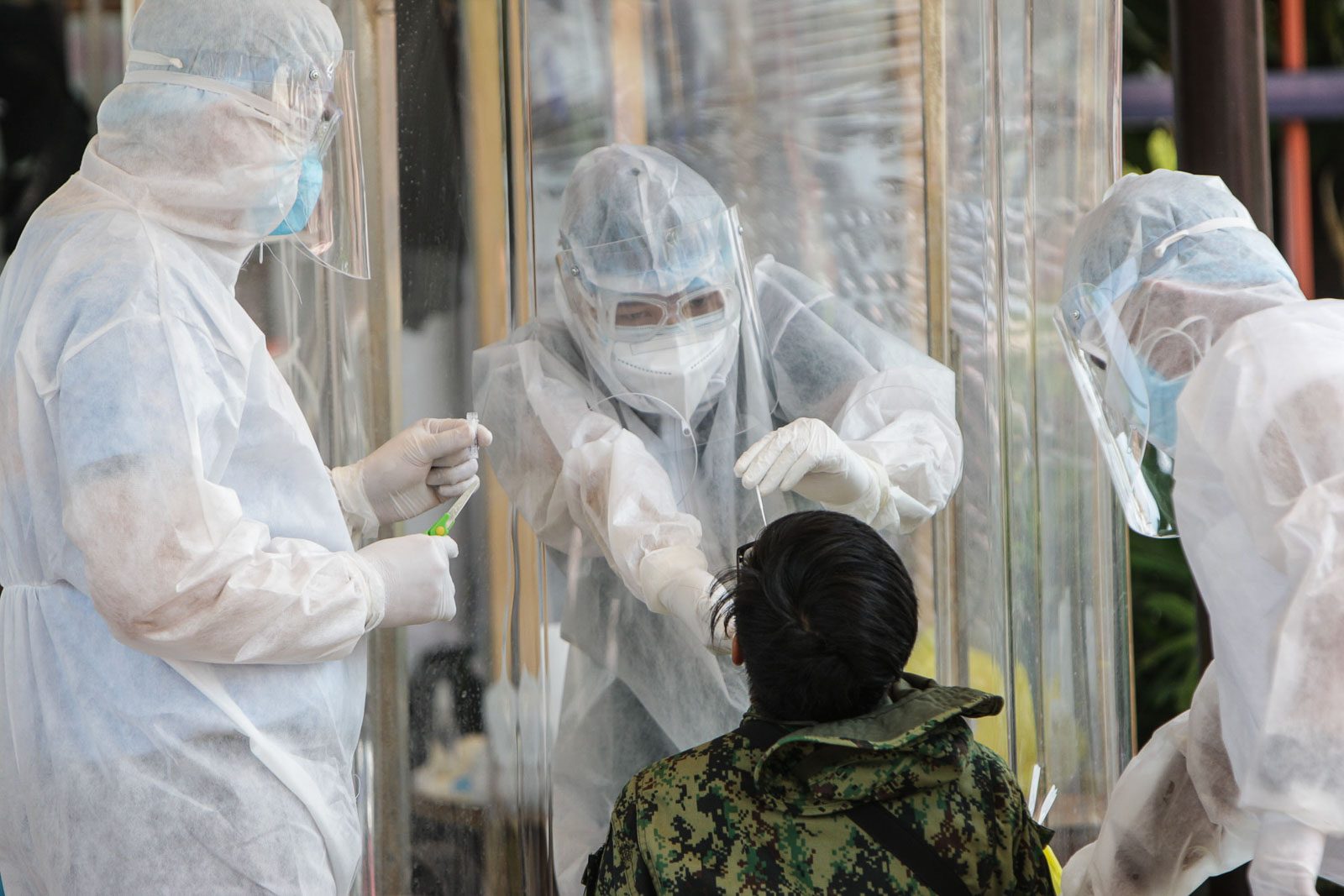SUMMARY
This is AI generated summarization, which may have errors. For context, always refer to the full article.

MANILA, Philippines – Citing a 10% novel coronavirus test positivity rate, the Philippines’ Department of Health (DOH) claimed the country has begun to “flatten the curve.”
Health Undersecretary Maria Rosario Vergeire made this claim on Friday, May 8, even as the country’s number of confirmed COVID-19 cases grew to 10,463 due to an additional 120 cases, and its testing capacity is far from the target.
The DOH’s basis was the country’s new positivity rate – the percentage of people who test positive for COVID-19 out of the total number of persons tested.
The Philippines clocked in a 10% test positivity rate in early May, from 17% in early April, said Vergeire in a virtual press briefing.
A month ago on April 6, 4,144 persons tested positive out of 24,755 unique individuals who were tested. This gives a positivity rate of 17%.
On May 6, 13,405 persons tested positive from the total 131,786 persons tested, leading to a positivity rate of 10%.
The 10% positivity rate was maintained on Thursday, May 7, when only 13,655 tested positive out of 136,169 unique individuals tested, based on DOH figures.
“The lowering of our positivity rate from 17% to 10% is one of the basis for saying we are flattening the curve,” Vergeire said in Filipino.
“This is good news but we continue to remind people that until a vaccine is found, the possibility of a second wave is still there,” she continued.
Vergeire explained why the 13,655 positive persons in the positivity rate computation is higher than the 10,463 confirmed cases reported by the DOH to the public.
“We would just like to clarify that our number of total tested individuals may be higher than the official number released because these numbers still go through the case verification and validation process of DOH,” she said in Filipino.
The World Health Organization (WHO) said countries should target a positive rate of 10% or lower.
A medical expert from the Philippine General Hospital (PGH) gave an even lower positivity rate for the country, 7%, citing figures from a COVID-19 tracker.
She was at the time speaking at an online forum organized by the DOH on Friday.
“What does the WHO say? The good standard or benchmark is about 10%. We are actually below that mark and that means a good performance,”said Dr Anna Ong-Lim, PGH chief of the Infection and Tropical Disease department.
Another doctor at the forum, epidemiologist Dr John Wong, also backed the “flattening the curve” claim.
“The data you’re seeing now is about 10 or as much as 14 days behind. If there has been no significant changes, we would expect the flattening to continue,” said Wong, who is from the Ateneo School of Medicine and Public Health.
More work to do. Lim, however, noted that the Philippines’ positivity rate is still higher than South Korea’s 3%, which is known to have a successful response to the pandemic.
Lim reminded the public that the coronavirus numbers should be interpreted in a bigger context.
“Inire-report na 200, 300 [ang cases] pero dapat nating tingnan in the context na how many tests were done?” Lim explained. (It’s being reported that there were 200 or 300 new cases, but we should look at the context – how many tests were done?)
Lim also added that since the Philippines was able to test more people for infection, the number of new cases would be higher compared to before when the country had limited capacity.
At present, the government’s “massive testing” only covers severe to critical cases, and the vulnerable population.
Vergeire said on Monday that the government plans to put up 4 mega swabbing centers in Metro Manila and Bulacan to increase the country’s coronavirus testing capacity. Once operational, Vergeire said 5,000 tests can be conducted daily.
Still limited testing capacity. Despite missing the end-of-April target of 8,000 daily tests, Bases Conversion and Development Authority chief and national testing czar Vince Dizon said on Tuesday that the government targets 30,000 coronavirus swab tests daily by May 30.
At present, the country’s daily testing capacity is at around 5,600 in 22 testing hubs nationwide. (READ: Where are testing centers for coronavirus in PH?)
Despite the backlog, Wong said that the flattening of the curve is “a real event.”
Don’t let guard down. Wong also warned that cases can also rise as long as there is still no vaccine for COVID-19. He explained that the pandemic will only end when a vaccine is discovered. (READ: The latest in the global race for a coronavirus vaccine)
According to the DOH, vaccines for the coronavirus being developed by other countries would take about 6 to 12 months or even one and a half years to be ready for commercial use.
Both Lim and Wong are part of the government task force on coronavirus’ technical advisory working group.
The UP COVID-19 Pandemic Response Team, in their latest report released on Thursday, said that coronavirus transmission may increase should face-to-face classes open in Metro Manila schools in August and September. (READ: ‘Physical’ school opening may increase coronavirus transmission in NCR) – Rappler.com
Add a comment
How does this make you feel?
There are no comments yet. Add your comment to start the conversation.